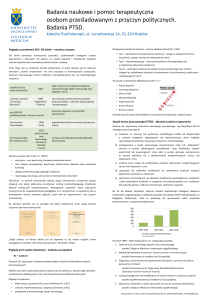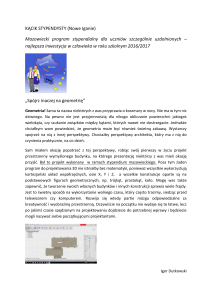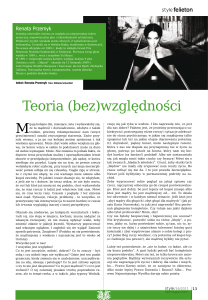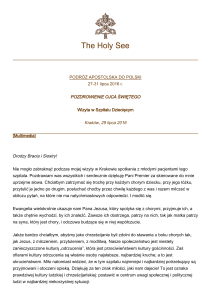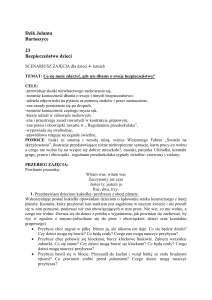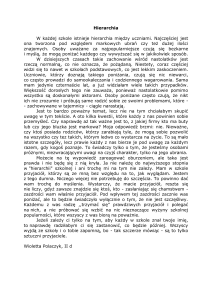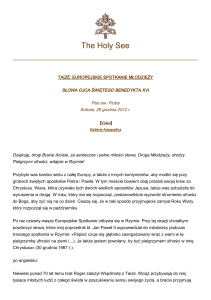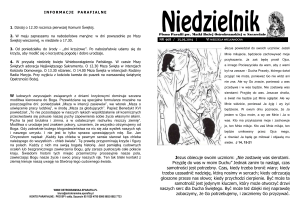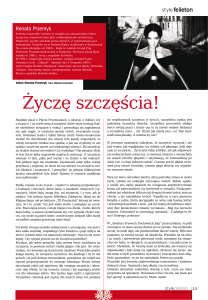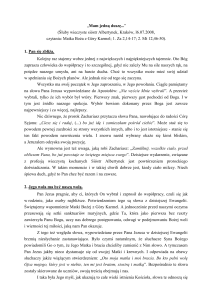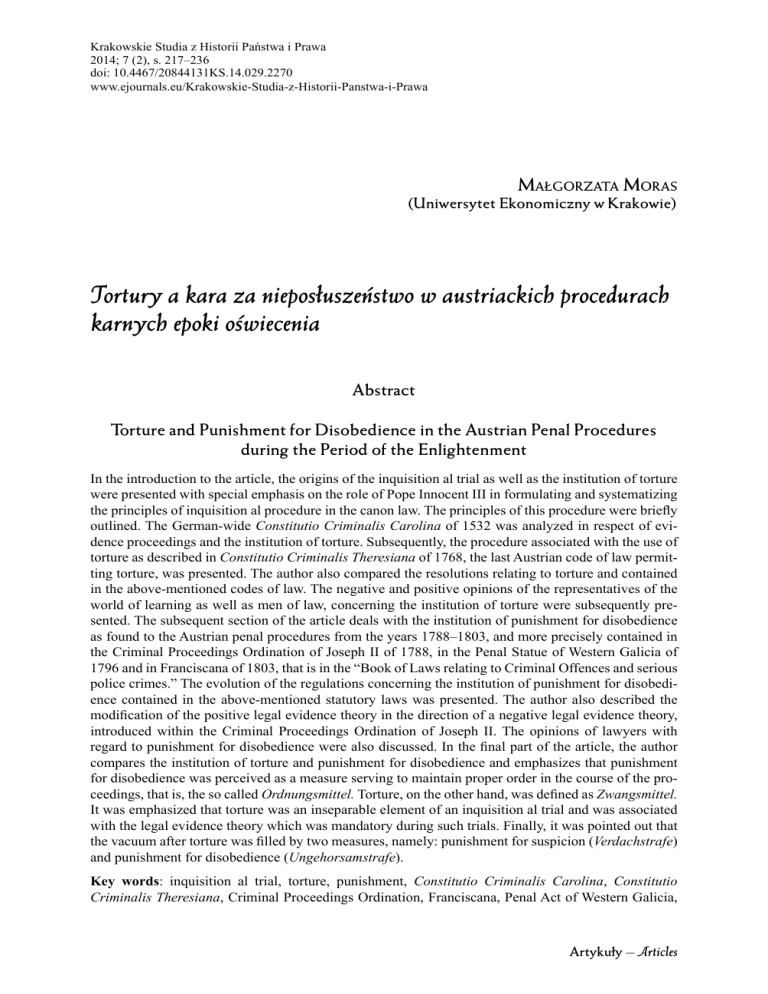
Krakowskie Studia z Historii Państwa i Prawa
2014; 7 (2), s. 217–236
doi: 10.4467/20844131KS.14.029.2270
www.ejournals.eu/Krakowskie-Studia-z-Historii-Panstwa-i-Prawa
Małgorzata Moras
(Uniwersytet Ekonomiczny w Krakowie)
Tortury a kara za nieposłuszeństwo w austriackich procedurach
karnych epoki oświecenia
Abstract
Torture and Punishment for Disobedience in the Austrian Penal Procedures
during the Period of the Enlightenment
In the introduction to the article, the origins of the inquisition al trial as well as the institution of torture
were presented with special emphasis on the role of Pope Innocent III in formulating and systematizing
the principles of inquisition al procedure in the canon law. The principles of this procedure were briefly
outlined. The German-wide Constitutio Criminalis Carolina of 1532 was analyzed in respect of evidence proceedings and the institution of torture. Subsequently, the procedure associated with the use of
torture as described in Constitutio Criminalis Theresiana of 1768, the last Austrian code of law permitting torture, was presented. The author also compared the resolutions relating to torture and contained
in the above-mentioned codes of law. The negative and positive opinions of the representatives of the
world of learning as well as men of law, concerning the institution of torture were subsequently presented. The subsequent section of the article deals with the institution of punishment for disobedience
as found to the Austrian penal procedures from the years 1788–1803, and more precisely contained in
the Criminal Proceedings Ordination of Joseph II of 1788, in the Penal Statue of Western Galicia of
1796 and in Franciscana of 1803, that is in the “Book of Laws relating to Criminal Offences and serious
police crimes.” The evolution of the regulations concerning the institution of punishment for disobedience contained in the above-mentioned statutory laws was presented. The author also described the
modification of the positive legal evidence theory in the direction of a negative legal evidence theory,
introduced within the Criminal Proceedings Ordination of Joseph II. The opinions of lawyers with
regard to punishment for disobedience were also discussed. In the final part of the article, the author
compares the institution of torture and punishment for disobedience and emphasizes that punishment
for disobedience was perceived as a measure serving to maintain proper order in the course of the proceedings, that is, the so called Ordnungsmittel. Torture, on the other hand, was defined as Zwangsmittel.
It was emphasized that torture was an inseparable element of an inquisition al trial and was associated
with the legal evidence theory which was mandatory during such trials. Finally, it was pointed out that
the vacuum after torture was filled by two measures, namely: punishment for suspicion (Verdachstrafe)
and punishment for disobedience (Ungehorsamstrafe).
Key words: inquisition al trial, torture, punishment, Constitutio Criminalis Carolina, Constitutio
Criminalis Theresiana, Criminal Proceedings Ordination, Franciscana, Penal Act of Western Galicia,
Artykuły – Articles
Małgorzata Moras
218
Book of Laws relating to criminal offences and serious police crimes, legal evidence theory, punishment for disobedience
Słowa klucze: proces inkwizycyjny, tortury, kara, Constitutio Criminalis Carolina, Constitutio
Criminalis Theresiana, Ordynacja karnoprocesowa, Franciszkana, Ustawa karna zachodniogalicyjska, Księga ustaw na zbrodnie i ciężkie policyjne przestępstwa, legalna teoria dowodowa, kara za
nieposłuszeństwo
1. Wprowadzenie
Instytucje kary za nieposłuszeństwo i tortur są nierozerwalnie związane z procesem
inkwizycyjnym i z obowiązującą w jego ramach legalną teorią dowodową1. Niniejsze
opracowanie ma na celu przybliżenie instytucji kary za nieposłuszeństwo przy uwzględnieniu austriackiego porządku prawnego drugiej połowy XVIII w. i początku XIX w.,
a także jest próbą komparacji tych instytucji2. W ramach niniejszego opracowania zostaną poddane analizie ogólnoniemiecka, podstawowa dla ugruntowania się procesu inkwizycyjnego w Europie, Constitutio Criminalis Carolina z 1532 r., a także wybrane
austriackie kodyfikacje doby oświecenia, takie jak Constitutio Criminalis Theresiana
z 1768 r., Ordynacja karnoprocesowa Józefa II z 1788 r., Ustawa karna zachodniogalicyjska z 1796 r. oraz Franciszkana z 1803 r. W rozwoju europejskiego prawodawstwa
przełomowym okresem była bowiem druga połowa XVIII w. oraz XIX w. Nastąpiła
wówczas zmiana celów ustawodawstwa i jego jakości. Stworzenie sprawnie funkcjonującego państwa wymagało zapewnienia jednorodności prawa, jego pewności i zgodności. Co więcej, kształtowały się wówczas modele prawa oparte na nowych ideach
związanych z humanitaryzmem i demokratyzmem.
Kwestia tortur lub – szerzej – stosowania przemocy w ramach prowadzonego postępowania pozostaje aktualna, a świadczy o tym przyjęta przez Zgromadzenie Ogólne
Narodów Zjednoczonych 10 grudnia 1984 r. „Konwencja w sprawie zakazu stosowania
tortur oraz innego okrutnego, nieludzkiego lub poniżającego traktowania albo karania”3.
Proces związany z likwidacją przemocy w ramach postępowania karnego, który rozpoczął się w oświeceniu, trwa nadal. W związku z tym aktualnym zagadnieniem pozostaje
stosowanie przemocy w postępowaniu karnym po zniesieniu tortur w monarchii habsburskiej, gdy nadal obowiązywały zasady procesu inkwizycyjnego.
Kształtowanie się tego procesu było długotrwałym procesem. Jego geneza sięga starożytności. Dopiero Kościół zaadoptował jednak ten rodzaj postępowania do własnych
celów, doprowadzając do jego upowszechnienia4. Za osobę, która wywarła największy wpływ na sformułowanie i jednocześnie usystematyzowanie zasad postępowania
Na temat zastosowania tortur w Anglii zob. K. Baran, Tortury w angielskim procesie karnym,
„Czasopismo Prawno-Historyczne” (dalej: CPH) 1979, t. 31, z. 2, s. 57–76.
2
Zagadnienia prawa karnego materialnego zostały poddane wnikliwej teoretycznoprawnej analizie przez
S. Salmonowicza w dysertacji pt. Prawo karne oświeconego absolutyzmu. Z dziejów kodyfikacji karnych
przełomu XVIII/XIX w., „Roczniki Towarzystwa Naukowego w Toruniu” 1966, R. 71, z. 3.
3
Dz.U. z 1989 r. Nr 63, poz. 378.
4
Więcej na temat wykorzystywania przez Kościół prawa rzymskiego zob. A. Dębiński, Kościół i prawo
rzymskie, Lublin 2007.
1
Artykuły – Articles

